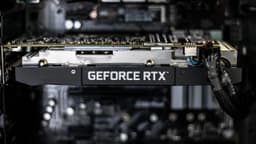Exploring Semantic Nets in Artificial Intelligence
Semantic nets are graphical representations of knowledge, similar to networks or maps. They consist of nodes and links. Each node represents a concept or an entity, while each link indicates the relationship between these entities. This structure facilitates the representation of knowledge in a format that AI systems can utilize.
The Building Blocks of a Semantic Net
-
Nodes: These are the main elements of a semantic net. Each node signifies an object or a concept, ranging from simple items like colors to complex ideas.
-
Links: Also known as edges, links represent the relationships connecting the nodes. Examples include relationships like "is a type of," "part of," or "similar to."
For instance, in a simple semantic net about animals, a node labeled “Dog” could connect to a “Cat” node via an "is similar to" link and to a “Mammal” node through an “is a type of” link.
Uses of Semantic Nets in AI
What are the applications of semantic nets in AI? They are leveraged in various areas, such as:
-
Machine Learning: Semantic nets help structure information in a way that machines can learn about relationships and properties of different objects. This is crucial for tasks such as image recognition.
-
Natural Language Processing (NLP): They are vital in understanding and generating human language. By mapping out relationships between concepts, AI can better comprehend the context of conversations and texts.
-
Expert Systems: These systems mimic human decision-making. Semantic nets enable these systems to understand domain-specific knowledge, such as in medicine or finance, for providing advice or predictions.
-
Knowledge Graphs: Some companies use semantic nets to create large-scale knowledge graphs that improve search engine results. These graphs connect users' queries to relevant information.
Benefits of Semantic Nets
Why are semantic nets valuable?
-
Flexibility: They are adaptable and can be applied across various domains, such as healthcare, automotive, and entertainment.
-
Enhanced Understanding: Semantic nets improve AI’s ability to process human language by providing better context and nuance recognition.
-
Scalability: As more data is incorporated, semantic nets can expand without compromising performance.
Challenges in Employing Semantic Nets
What challenges come with using semantic nets?
-
Complexity in Design: Building an effective semantic net requires careful thought about how concepts relate to one another, which can be challenging.
-
Computational Demands: Larger and more intricate semantic nets necessitate more processing resources, which can be a hurdle for real-time applications.
The Future of Semantic Nets in AI
With the ongoing evolution of AI, the significance of semantic nets is likely to increase. Developments in hardware and algorithms will help address current limitations, improving the design and functionality of these nets. This progression may lead to AI systems capable of near-human comprehension in interactions.
AI's exploration of semantic nets is just beginning. The potential of this tool may significantly enhance how AI integrates into our daily lives.












